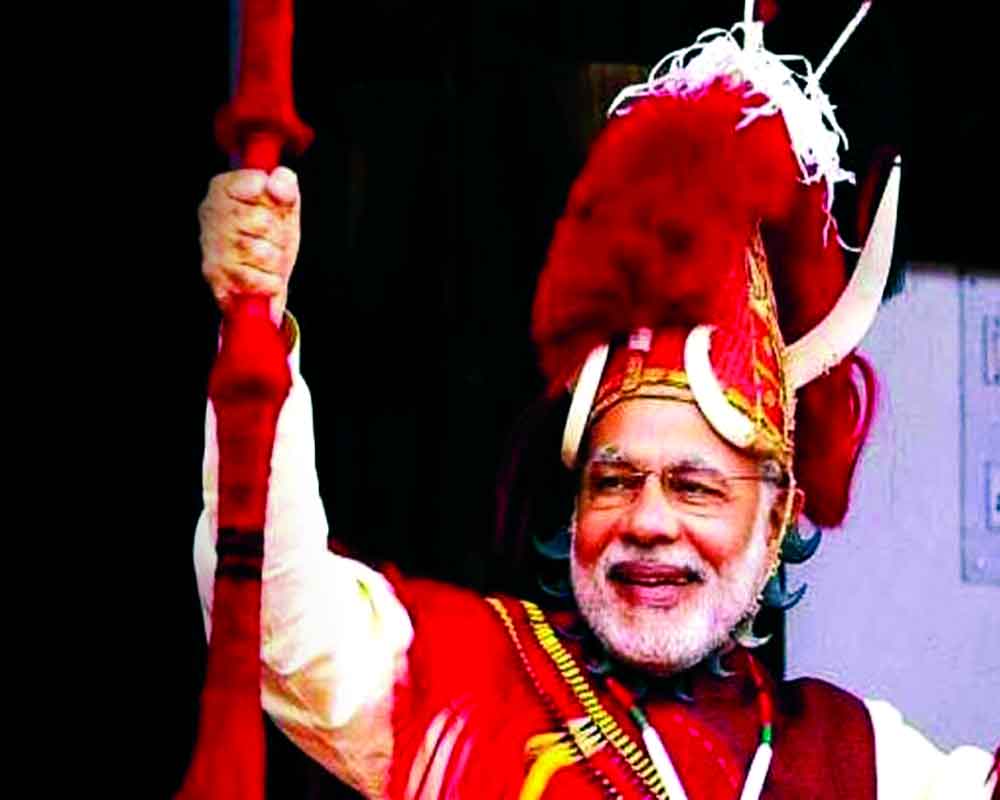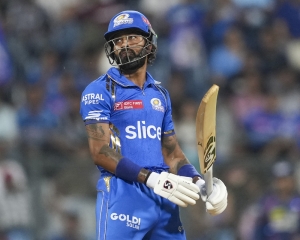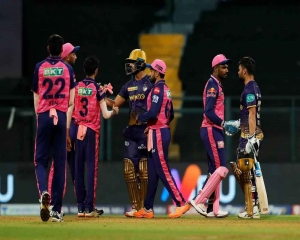Modi’s North east story
Author: Tuhin Sinha and Aditya Pittie
Publisher: Rupa (www.rupapublications.co.in)
Price: Rs 595.00
A well-timed book, Modi’s North East Story, enumerating the development story of the North East, is an inspiration for those genuinely wishing to connect with this hitherto remote region of India, says KUMAR CHELLAPPAN
It is election time and television news channels across the country are on a roll as spokespersons of various Opposition parties try their best to churn out the “failures” of the NDA Government that has been in power for the past 10 years even as representatives of the ruling coalition vociferously list out the achievements of the BJP-led Government at the Centre.
This is an age-old practice since the first General Elections held in India from October 1951 to February 1952. Although the ruling Congress party back then had nothing major to list out as achievements, the party continued to roll out new promises. From the basic provision of drinking water to all villages, establishment of schools in all districts of the country, to subsidised ration to the poorer sections of society, all topped the list of electoral promises.
These so-called promises continued till the 1990s. In fact, in the 1960s, people were asked to forego a day’s meal owing to the severe famine the nation faced back then. A lot has been written about the Green Revolution but the sad truth is that despite the much publicised initiative, hunger and malnutrition continued to haunt India. There was no serious attempt from the Governments of the day to increase productivity of our farm lands. India’s “pluralism” and “vivid nature” were on full display during the summer as well as rainy seasons.
While the scorching heat of the summer played havoc in South India with most of the rivers going dry, the North experienced floods and deluge. Every year hundreds were drowned in the recurring floods as the snow in the Himalayas melted causing severe deluges in the mighty Brahmaputra which resulted in village after village in States like Bengal, Assam and Bihar getting completely devoured by flood waters. While the northern part of the country was battered by floods, the southern States were crying for drinking water.
Rivers like the Kavery and the Krishna routinely run dry whenever the South West Monsoon fails to hit the Indian coast. The drought in the Kaveri River has severe implications for Karnataka, Tamil Nadu and Puducherry as farming operations come to a complete standstill due to non-availability of water for irrigation.
Although a lot of experts ranging from Sir Arthur Cotton and Captain Dastur to CP Ramaswamy Iyer and VK Rao had suggested the interlinking of Indian rivers no Government took note of the proposal. Every year the west flowing rivers in Karnataka and Maharashtra discharge thousands of cubic feet water into the Arabian Sea while the Godavari discharges an equal or more quantity of flood water into the Bay of Bengal. Had a responsible Government taken adequate measures to divert these river waters into the Mettur Dam or other parts of water-starved regions, Tamil Nadu would have come out of its perpetual struggle with water scarcity.
The Supreme Court in 2002 ruled that the Government of India should take the initiative and interlink the rivers in the country so that the perpetual flood, drought and water scarcity problems would be resolved once and for all. Athough we did get governments that worked while other governments worked faster, nothing permanent was done to sort out the issue for good.
In fact, we even witnessed a Chennai-based Gandhian write to Prime Minister Narendra Modi immediately after the 2014 Lok Sabha polls, asking him not to take up the post of Prime Minister as the latter had no mandate to rule the country. Indeed, the priority of our politicians was at variance with that of the requirements of the common man. Till 1998, the country had not heard about a four-lane highway linking Kanyakumari and Kashmir and Surat to Silchar. Nobody took the initiative to bring down the travelling time between New Delhi and Thiruvananthapuram when train travelers had to toil for almost 52 hours to cover the 2900 km. There was no highway between Chennai and Kochi and a bus journey took literally two days to reach the destination.
If this was the situation in mainland India, the condition in the North East India was far worse. Insurgency grew by leaps and bounds. The Nagas, the people of Manipur, and other North Eastern states of India considered themselves as citizens of a separate country altogether. So much so, that a so-called government in exile is functioning from some European countries claiming to be the lone representative of the Nagas.
Most of the youth of the North Eastern States are even misled to believe that they do not belong to India. Making matters worse, those in power in these regions never wanted to disprove this notion. Immediately after Independence from our British colonial masters, what the new rulers did instead was to create yet another problem, this time in Kashmir. A separate entity by the name North East Frontier Agency (NEFA) was formed with the objective of uplifting the seven sisters of Brahmaputra (as Tripura, Assam, Meghalaya, Manipur, Assam, Nagaland and Mizoram were known initially).
Unfortunately, the Congress Government that ruled post-Independence till 1977, 1980-1989, 1991-1996 and 2004-2014 did nothing for the economic and social development of these States. In 1998, when Atal Bihari Vajpayee was sworn in as Prime Minister, he renamed the Seven Sisters of Brahmaputra as Ashtalakshmi by including Sikkim in the group and some long-needed efforts were made to bring these eight States into the national mainstream. Till then, news emanating from these States dwelt mainly on secessionism-related issues. Bodoland, AASU, the Maoists of Manipur and the National Socialist Council of Nagalim and the turf war between various terrorist organisations formed the crux of news broadcasts from the North East.
However, when the BJP Government came to power in 2014, it launched a plethora of missions to harness the real potential of the North East. In fact, Prime Minister Narendra Modi was the one to comprehend the vast opportunities and immense potential offered by this hitherto unexplored region of India.
It is in this context that Modi’s North East Story authored by two young professionals, Tuhin A Sinha and Aditya Pittie, deserves appreciation and immediate attention. The 196-page book offers a panoramic view of the eight North Eastern States and the path-breaking developments that have taken place in this long neglected region in the past decade. It has witnessed an unprecedented development in infrastructure, the number of airports have increased manifold and the entire region today has rail and communication connectivity to boast of.
Clearly, neither Prime Minister Modi nor his team are the kind to rest on their achievements. Instead they are continuing furiously on the path of development and work is going on at a frenetic pace to develop these States with world class infrastructure facilities even as they ensure that the essence and unique culture and heritage of these regions remain untouched.
Assam Chief Minister Himanta Biswa Sarma, Kiren Rijiju, the energetic and youthful Union Minister from Arunachal Pradesh and Pema Khandu, Chief Minister of Arunachal Pradesh, and a host of such dynamic leaders and policy makers have made their mark in the holistic development of the North East. The authors of Modi’s North East Story deserve kudos as make the readers travel straight to these scenic States with the story of the coming of age of the eight States, the Ashtalakshmis.
Even an old and ailing person like this writer felt inspired to fly to these abodes of the God and Goddesses. The words penned down by Tuhin Sinha and Pittie come straight from the heart and indeed inspire their readers to visit the North East, behold its serene landscape and meet the people long alienated from the country’s mainstream.


























